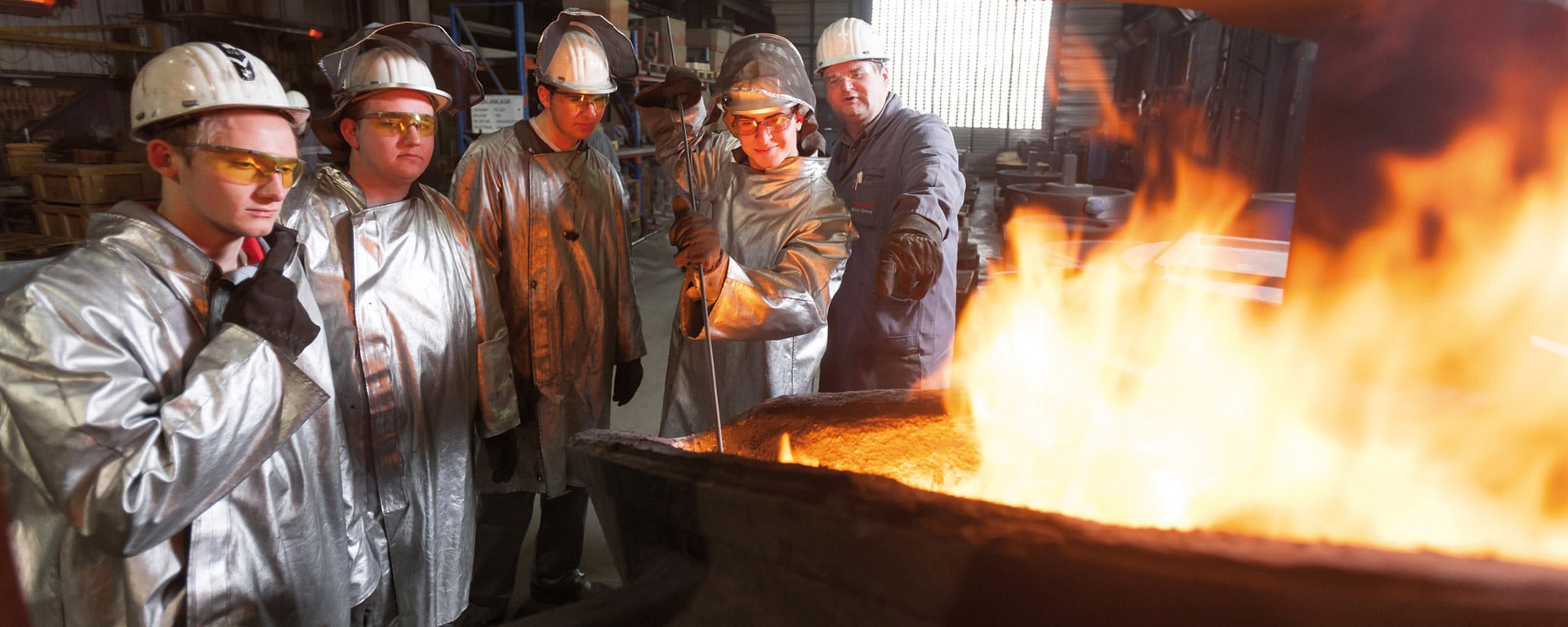What do you do as a foundry mechanic?
Are you not at all interested in desk jobs and office work? Melting and shaping metal all the more so? The profession of foundry mechanic offers you exactly that. Your main task is to produce casting molds in order to cast components from molten metal. These can be anything from a gear wheel to a ship’s propeller. Depending on which component is required, you plan a wide variety of casting molds, sometimes even in such a way that cavities can be created in the metal. To do this, you sometimes use computer-based model software, i.e. CAD and CAM technology. As soon as the casting mold is ready, you move on to the melting furnace. At temperatures of over a thousand degrees, you melt metals and bring them into the right mixing ratio. You also make sure that no air bubbles form that could later impair the load-bearing capacity. Then it’s time for the hot phase: you pour the molten metal into the prepared mold. You then have to wait until the component has cooled down. But your work doesn’t end here. Finally, you also need to check whether the end product matches the specifications. While you compare the dimensions with the construction plans, you also check whether any cracks have formed. If necessary, you pick up the file and apply the necessary finishing touches. As a foundry mechanic, you will definitely become an absolute metal expert.
Where are you needed?
In foundry mechanics, large melting furnaces determine your working environment. They are used particularly in foundries in the iron and steel industry or in toolmaking. Naturally, this workplace is a challenge. Flames, molten metal and high temperatures are an integral part of your everyday life. The same applies to the protective clothing you wear to protect yourself from heat and sparks.
What should you bring with you?
You will do well in your dual apprenticeship as a foundry mechanic if you can cope well with a warm climate and are not afraid of getting your hands dirty. It would also be great if you have at least a secondary school leaving certificate and are physically resilient. For example, if you are a member of a sports club or do regular fitness training, you already have good prerequisites. You will be working with high temperatures and also with chemicals that serve as molding and auxiliary materials for melting. Of course, this also requires care and a sense of responsibility. Despite all the caution, your interest in technology and metalworking should not be neglected.
Your apprenticeship at a glance
- Duration 3.5 years
- Theory at vocational school, practice in the training company
- Training content ranging from metalworking techniques and casting processes to manual skills and working techniques.
- After your dual training in foundry mechanics, you will have the opportunity to continue your education. With some work experience under your belt, you can take the master craftsman’s examination, for example. With a master craftsman’s certificate in foundry mechanics, you have the prerequisites to set up your own company and train apprentices yourself. This makes sense, as there are far too few skilled workers in foundry technology and demand is very high. However, a degree in construction technology or mechanical engineering is also a good prospect.
